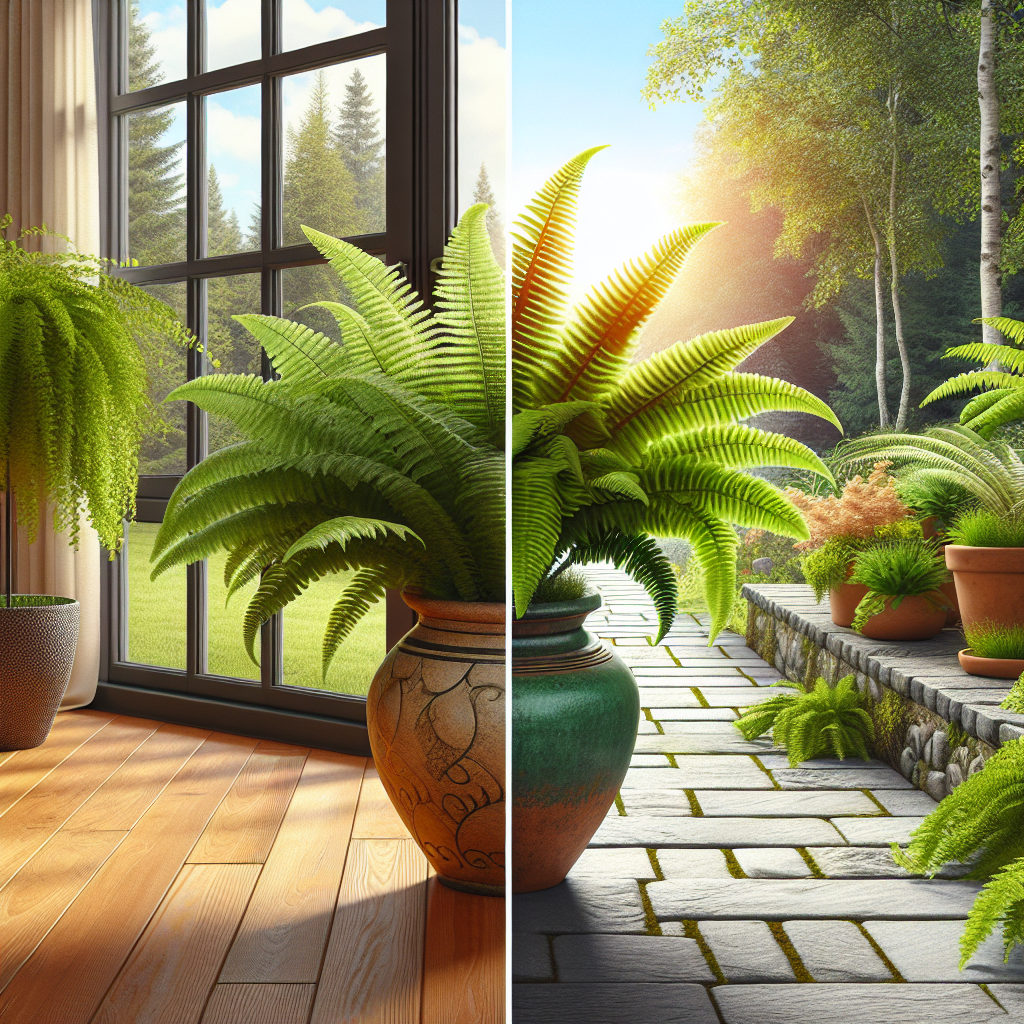There is no denying the beauty and charm that ferns bring to any space. With their delicate fronds and lush greenery, ferns have long been a favorite among gardeners and plant enthusiasts alike. Whether you are looking to add some greenery to your indoor space or brighten up your outdoor garden, ferns in containers are a great choice. However, when it comes to choosing between indoor and outdoor ferns in containers, there are a few things you need to consider.
Indoor Ferns in Containers
Indoor ferns in containers can be a stylish addition to any room in your home. They have the ability to add a touch of nature and tranquility to your living space while also purifying the air. There are many different types of indoor ferns that thrive in containers, including Boston ferns, maidenhair ferns, and bird’s nest ferns.
When it comes to caring for indoor ferns in containers, there are a few key things you need to keep in mind. First and foremost, indoor ferns require bright, indirect light. Placing your fern near a window where it will receive plenty of natural light is ideal. However, be sure to avoid placing your fern in direct sunlight as this can cause its delicate fronds to burn.
In terms of watering, indoor ferns prefer consistently moist soil. Be sure to water your indoor fern regularly, allowing the top inch of soil to dry out before watering again. Additionally, indoor ferns thrive in humid environments so be sure to mist them regularly or place a humidifier near your plant.
Fertilizing your indoor fern is also important for its overall health and growth. Use a balanced liquid fertilizer once a month during the growing season (spring and summer) but avoid fertilizing during the winter months when the plant is dormant.
Outdoor Ferns in Containers
Outdoor ferns in containers can add interest and texture to your garden or patio space. They are perfect for adding a pop of greenery to outdoor areas that may not receive enough sunlight for other plants to thrive. When choosing outdoor ferns for containers, it is important to select varieties that are suitable for your climate.
One of the key benefits of growing outdoor ferns in containers is the flexibility they offer when it comes to placement. You can easily move your containerized fern around your outdoor space depending on its light requirements or simply for aesthetic reasons.
When it comes to caring for outdoor ferns in containers, there are a few additional factors you need to consider compared to their indoor counterparts. Outdoor ferns require more water than their indoor counterparts as they are exposed to more sunlight and wind which can dry out the soil quickly. Be sure to check the soil moisture regularly and water whenever it feels dry.
Outdoor containerized ferns may also benefit from regular fertilization during the growing season (spring and summer). Use a slow-release fertilizer or apply liquid fertilizer every few weeks according to the instructions on the packaging.
One important consideration when growing outdoor containerized plants is protecting them from extreme weather conditions such as frost or strong winds. Consider moving your containerized plants indoors during particularly harsh weather conditions or investing in protective covers.
Final Thoughts
Whether you choose indoor or outdoor ferns for containers, both options offer unique benefits and challenges that you need to consider before making a decision on which type of plant will work best for you.
Indoor Fern
Outdoor Fern
In general
• Indoor Fern needs bright indirect light.
• Outdoor Fern needs partial shade
• Indoor Fronds burn under direct sun.
• May dehydrate if not properly watered.
• Constant watering due exposure
to weather conditions.
Care & Maintenance:
• Mist regularly due drier inside air condition.
• Fertilize once monthly during growth period.
• Keep humidity level high by occasional misting since interior air tend become drier.
Placement:
Placement:
Interior living spaces with good air circulation but minimize direct sunlight since its easily burn leaves fronds rapidly if under direct sunlights
Exterior location with exposed morning sunlight before sunset where afternoon full sunlights should avoid at all cost.
Regardless whether Indoor vs Outdoor Fern has both advantages & disadvantages towards care maintenance & placement setting however having either planted should fulfill aspect decorating environment cosniderably by improving aesthethic wise bringing back sensese being close nature ambiance surrounding.urrounding area..
Ultimately, whether you choose indoor or outdoor containerized plants depends on several factors including light availability, climate conditions, and personal preference. Whichever option you choose, properly caring for your containerized plants – whether they be indoors our outdoors — will ensure they thrive and bring joy with their beauty all year round.














